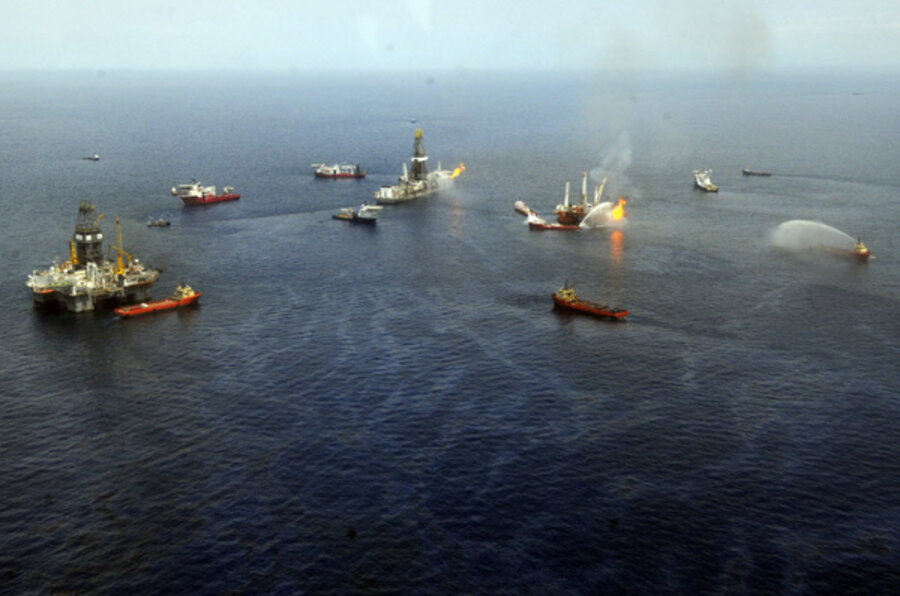BP oil spill: Relief well is ahead of schedule, close to target
Drilling for a relief well that could finally stop the BP oil spill is a few hundred feet from its target. But it will take until mid-August, officials say, for operations to begin for sealing the well.
Drilling of the well started May 2, less than two weeks after the Deepwater Horizon rig explosion. The well is intended to intersect with the casing pipe of the damaged well, located three miles below the seafloor. Once the newly drilled well reaches its target and the casing is secured, the plan is for BP to pump heavy drilling mud down the new well’s drill pipe. That is expected to stop the runaway oil, and it is hoped that an application of cement will then permanently seal the opening.
The drilling of a second relief well is also under way. That operation began on May 16 on the opposite side of the damaged pipe. This well will be used if the first relief well fails.
IN PICTURES: The Gulf oil spill's impact on nature
In a press conference with reporters Wednesday, Coast Guard Adm. Thad Allen said that the relief well was 264 feet from its target as of Tuesday. That puts efforts at least a week ahead of schedule.
Despite the accelerated progress, Allen was hesitant to name an earlier operational date, saying he still considered mid-August realistic. Drilling takes place in increments of 15 to 20 feet because of the sensitive nature of movement close to the original well.
When drilling began, however, it was speeded up by drilling parallel to the existing pipe, about 2,800 feet away. The relief well started steering toward the pipe at about 10,000 feet underwater.
In between the stretches of drilling, BP workers use magnetometers to ensure they are steering closer to the original pipe. The specialized meters detect the electromagnetic field created by the pipe’s electrical current. The current operates embedded sensors in the pipe, which are typically used to help oil companies navigate rock reservoirs when they are drilling into them.
“This is a slow and precise process,” Allen said. “This has to be an exact drill.”
Once the relief well penetrates the original drill pipe’s well bore and casing, there are a number of factors to consider.
First, Allen says, the drilling team needs to assess the condition of the pipe before moving ahead. Allen called the process “meticulous” and said that in order not “to nick that well on the way down,” workers will switch the drill bit to one that is smaller and more refined.
Pumping the drilling mud will take place once it is determined that the interception is sealed. That stage will probably take seven to 10 days, Allen says.
IN PICTURES: The Gulf oil spill's impact on nature
Related:





